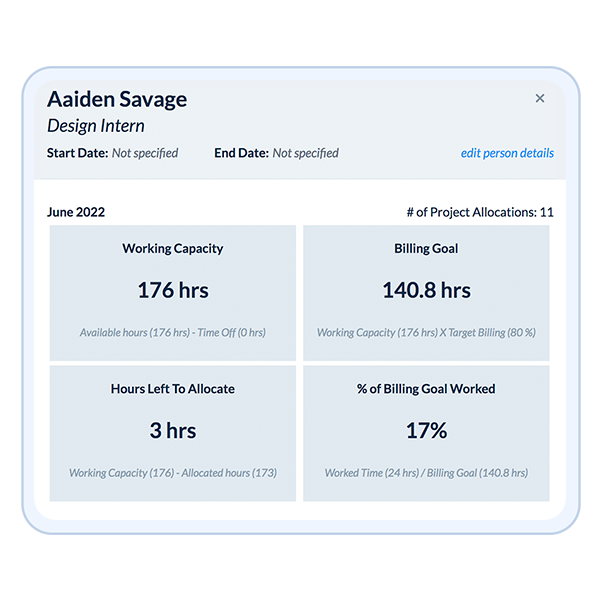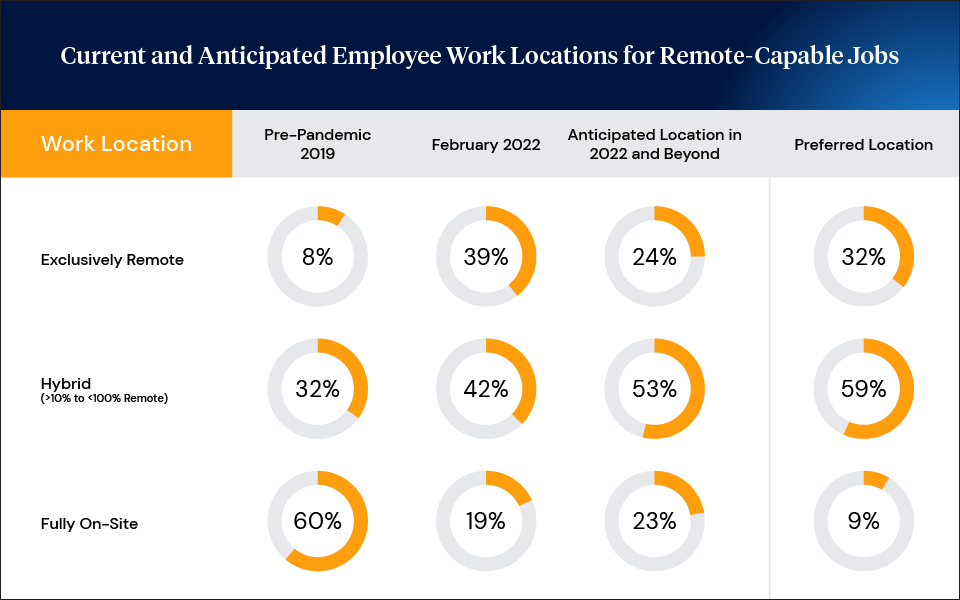The Future of Project Management: 7 Upcoming Trends for 2023
Table of Contents
It should come as no surprise to anyone—project managers have been through the wringer.
Since the start of the pandemic, not only have they been forced to shift to remote work settings, but supply chain issues and soaring inflation rates have wreaked havoc on anticipated profit margins across industries.
Between ongoing global instability and a looming recession, it’s a wonder people still sign up for a role that feels like it asks for the impossible daily.
Despite these challenges, the international demand for project managers continues to increase yearly. According to the Project Management Institute, by 2027, employers will need nearly 88 million people in project-related roles.
However, the demands of the role have also metamorphosed over time. These days project managers are no longer expected to simply check off tasks on a Gantt chart or run sprint sessions. Today, organizations expect the role to be filled by strategic leaders who effect measurable change.
With these new expectations comes the demand for new innovative skills with a growing emphasis on emotional intelligence, analytical thinking, and working under a growth mindset.
Below are some anticipated trends that we predict will impact project managers in the year ahead.
1. Embracing Permanent Hybrid Work
Lessons learned early in the pandemic regarding the sustainability of remote work have taken hold and are here to stay. While some organizations are still in denial about this new reality, it’s our recommendation that they get on board fast.
In the years ahead, project managers will largely be anticipating a hybrid office environment—one that allows them to spend part of their time on-site and part of their time working remotely. Those businesses that refuse to adjust to this model will be destined for higher attrition rates.
The data proves our point.
In a recent poll, Gallup studied the needs, experiences, and future plans of more than 140,000 U.S. workers surveyed since the pandemic began.
The results were telling: Most employees confirmed that a hybrid work schedule would be their preferred office arrangement going forward. Specifically, 53% of those polled expect a hybrid environment, whereas 24% expect to work exclusively remotely.
Additionally, Gallup inquired whether employees would look for a new job if their employer ceased offering remote-work options in the future. An astonishing 54% of employees currently working entirely from home said they would search for another job and 38% of hybrid workers said the same.
Those figures alone should give pause to any business not considering remote-work flexibility. Any lingering rigidity will likely become a risk factor as companies lose top candidates to more forward-thinking companies.
Specifically for project managers, the role is ideally suited to hybrid arrangements as it requires both synchronous and asynchronous tasks. Most project managers routinely go on-site to oversee staff progress, but most planning, delegating, and supervising activities can occur anywhere with secure connectivity.
2. Capturing More Data Points for AI and Machine-Learning Technologies
By next year, businesses will be amassing more data than ever, and the project management space will be no exception. Proper data capture and use can remove the guesswork from decision-making and provide tangible evidence that project managers can use to steer their teams.
Work-in-progress transparency gives leaders an opportunity to take swift corrective action if needed. Specifically, capturing accurate time-entry data can prove critical in helping project managers scope work, allocate resources, and increase efficiency. Because time-entry data is captured as the activities occur, it can reveal how projects are tracking toward plan in real-time.
And with the advent of AI and machine-learning technologies, companies can now programmatically analyze vast amounts of data quickly and precisely. Doing so gives them critical insights to solve customer problems, optimize services, and improve operations.
And while AI is already changing the world, it’s really only just begun.
According to the Project Management Institute, 81% of project management professionals claim that AI technology is currently impacting their organizations, with that number likely increasing over time. In addition, 37% say implementing AI technologies is a top priority for their business.
Moreover, project professionals predict the proportion of initiatives they manage with AI will jump from 23% to 37% over the next three years.
3. Increasing Expectations for Data Literacy
Data literacy is poised to become one of project management’s most highly sought-after skills. Data literacy enables leaders to ask pertinent questions, capture the right data, and interpret points that derive meaningful and actionable business insights.
A project manager with strong data literacy skills can better tell whether a project is on schedule and within budget before it becomes a problem. Foreseeing the telltale signs of late delivery or costs spiraling out of control is key to making timely course corrections.
A recent survey by McKinsey & Company revealed that companies where employees consistently use data-informed decision-making were 1.5x times more likely to report revenue growth of more than 10%.
Looking forward, the majority of business leaders will expect project managers to make decisions based on data. However, honing data literacy skills isn’t necessarily easy.
According to Gartner, 50% of organizations lack sufficient data literacy skills to achieve business value, and 35% of chief data officers said poor data literacy is one of the top roadblocks to the effective use of data and analytics, just behind cultural challenges and lack of resources and funding.
The most significant obstacle facing organizations looking to embrace data analytics is training employees across all departments to use business intelligence in their day-to-day work.
To meet that challenge and emphasize the importance of data literacy in the organization, business leaders can begin by explaining decisions made in their day-to-day business environment through data.
4. Outsourcing of Project Management Roles
Outsourcing project managers is another trend that has recently caught fire. According to Statista.com, the global outsourcing market recently totaled over $131 billion and continues to grow.
One benefit is that when you outsource a project management role, you gain access to a vastly increased talent pool. Moreover, top talent has been especially hard to recruit due to a challenging hiring environment. Many companies are posting job openings in record numbers, but applicant activity is at record lows.
If your business has these staffing issues, outsourcing your project management roles can be a strategic and shrewd move. Not only can it save the organization money, but if you’re not limited to just working with employees on payroll, you can find a worker with the exact skill set needed to complete the project.
Additionally, certification has become a major driver of outsourcing as more initiatives and clients require their project managers to have specific certifications to run their projects. It’s critical to have access to the right skill sets to win contracts.
For example, businesses may lose out on lucrative deals if they do not have staff on payroll with the required certification to complete a project. Rather than spending resources on certifying their employees, outsourcing the job to a contractor with the requisite experience can make more financial sense.
Finally, outsourcing frees up valuable time, which allows your in-house team to be focused on more core tasks. Leaders can allocate resources to tasks without the fear of overburdening them or the fear that the project will not be completed on time and on budget.
5. Being Asked to Do More with Less
The trick to doing more with less isn’t about working later, harder, or faster. It’s about investing time in the right areas of the business, specifically the ones that yield the highest ROI. In other words, work smarter, not harder.
That can feel easier said than done, but it essentially comes down to optimizing efficiency and productivity rates.
To begin, it’s important to have the right tools. Some of the savviest project managers are now using resource management software, which helps leaders optimize peoples’ time and gain insight into their workloads and availability. In addition, these solutions do a fantastic job of predicting staff shortages, balancing utilization rates, and identifying potential bottlenecks.
For Project ManagersResource Management
Monitor employee capacity and allocations in real time.

Resource management also works well to ensure employees are assigned the right tasks aligned with the business’s goals without over-allocating and resulting in burnout.
Generally, it’s a best practice not to assign more than 80% of your resource availability. Staying below the 80% threshold also signals respect for project team members’ time, which can lead to increased goodwill between project managers, team members, and functional leaders.
During a large initiative, the biggest cost driver is often the people, whether they are rate-based or salaried. To protect that investment, it’s necessary to understand where workers spend their time and redirect their efforts if necessary.
Along with this challenge, an associated best practice is to allocate resources keeping the long-term project pipeline in mind. Understanding when essential team members will need to shift projects will help project managers craft more accurate allocations.
6. Increasing Accountability to Finance
As much as we would like it to be, budgeting is not an exact science. Project managers can rarely predict with absolute certainty what the exact costs will be at the onset of an initiative.
Additionally, whenever there are large market shifts, a business may experience costs and anticipated revenue changes due to the overall economy. Whenever this happens, your budget will likely show variances that need to be scrutinized.
While scrutiny may initially feel daunting, comparing anticipated results with actuals can provide meaningful insights into the health and sustainability of your business. As hard as it may be to face negative results, valuable lessons can be learned.
If you find yourself in this position, anticipate that your finance team will conduct a thorough review of your budget, costs, and results. This may feel intrusive, but it’s important to perform these audits to understand the exact reasons why the project went off course to prevent a recurrence.
For example, if revenue from one of your projects has dropped 25% because of supply chain issues, expect Finance to provide revised estimates for future projects as they take into account lessons learned. Upcoming revenue projections may also be modified to account for the unexpected negative impact on your bottom line.
7. Expanding Reliance on Third-Party Vendors
In project management, having access to the right skill sets and capabilities can make or break your initiative. Every resource at your disposal is critical whether they are in-house or not. It’s essential to employ vendors you can rely on so your core team can concentrate on the things you do best.
Choosing vendors that specialize in the service you want them to carry out can help your business achieve more productive workflows. But do so cautiously. Project managers must select the right vendors, negotiate strategic contracts, determine the ideal number of vendors their organization can support, and mitigate any potential risk.
Additionally, utilizing vendors is a powerful tool to expand the hiring pool and attract talent worldwide. Costs are also saved. Signing bonuses and other incentives are less important for attracting and locking in the right candidate.
When done strategically, businesses can use vendors to maximize output and increase productivity and revenue. Moreover, with a challenging hiring environment, top talent has been hard to recruit in the past year. Many companies are posting job openings in record numbers, but applicant activity is at record lows.
Working with outside vendors can also help make your business more flexible and agile and help your organization adapt to changing market conditions and challenges while saving costs.
Looking Toward the Future
Project management roles are ever-evolving to meet the needs of workplace problems, but the trends we are seeing today are because the nature of the work demands it. We predict these trends will continue to shape the future of the project management space over time and ultimately transform the business landscape in the coming years.














